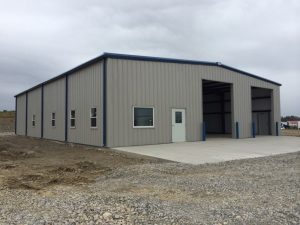Fire-Resistant Steel Coatings

Introduction to Fire-Resistant Steel Coatings
Fire-resistant steel coatings are specialized protective layers applied to steel structures to enhance their ability to withstand high temperatures during a fire. Steel, while inherently strong and durable, loses much of its structural integrity when exposed to extreme heat, often above 500°C (932°F). Without protection, steel components can deform, weaken, or even fail, leading to catastrophic building collapses. Fire-resistant coatings act as a barrier that slows down the rate at which heat reaches the steel surface, providing crucial extra time for evacuation and firefighting efforts.
These coatings are typically intumescent materials that expand and form an insulating char layer when exposed to fire, reducing heat transfer and maintaining the steel’s load-bearing capacity for extended periods. The effectiveness of fire-resistant coatings is measured by fire-resistance ratings, commonly expressed in minutes or hours, indicating how long the coated steel can withstand fire exposure while retaining its structural function. This technology is essential in commercial, industrial, and residential buildings to comply with fire safety codes and protect both occupants and property.
Types and Technologies of Fire-Resistant Coatings
There are several types of fire-resistant steel coatings designed to meet different project requirements. Intumescent coatings are among the most popular; they remain thin and unobtrusive under normal conditions but swell up to many times their original thickness during a fire. This swelling forms a lightweight, insulating char that protects the steel substrate. These coatings can be applied by spray, brush, or roller, making them suitable for both new constructions and retrofit projects.
Another type includes cementitious coatings, which consist of mineral-based materials that provide fire resistance through their inherent heat insulating properties. These are thicker and heavier than intumescent coatings and are often used in industrial or heavy-duty applications.
Fire-resistant coatings also vary in their resistance ratings, application thickness, environmental durability, and aesthetic finish. Advanced formulations incorporate additives for moisture resistance, UV protection, and corrosion inhibition, ensuring longevity in harsh environments. Innovations such as water-based intumescent coatings offer safer application and lower environmental impact compared to traditional solvent-based products.
Benefits of Using Fire-Resistant Steel Coatings
Applying fire-resistant coatings to steel structures offers significant safety, regulatory, and economic benefits. The primary advantage is enhancing the fire resistance of steel, allowing it to maintain strength longer under extreme heat, which can save lives by providing occupants more time to evacuate safely. It also gives firefighters additional time to control the blaze, potentially limiting property damage.
From a regulatory perspective, many building codes and safety standards worldwide mandate minimum fire-resistance levels for structural steel in specific building types, such as high-rise buildings, hospitals, schools, and commercial complexes. Fire-resistant coatings help builders comply with these regulations efficiently without excessive structural redesign.
Economically, these coatings can be a cost-effective solution compared to using thicker steel sections or other fireproofing methods. They add relatively little weight, reducing transportation and installation costs. Furthermore, coated steel requires less maintenance and can protect against corrosion simultaneously, extending the lifespan of the structure and lowering long-term expenses.
Challenges and Future Trends in Fire-Resistant Coatings
While fire-resistant steel coatings provide crucial protection, challenges remain in application, performance, and environmental considerations. Proper surface preparation and skilled application are vital to ensure consistent thickness and adhesion, which directly affect fire performance. Poor workmanship can lead to coating failures under fire conditions.
Environmental regulations are increasingly influencing the development of coatings, pushing for low-VOC (volatile organic compounds) and non-toxic formulations to reduce health and environmental impacts during application and disposal. Balancing high fire performance with environmental friendliness is a key area of ongoing research.
Looking forward, advances in nanotechnology and material science promise to improve coating efficiency, reduce application thickness, and enhance multifunctionality, such as combining fire resistance with thermal insulation, corrosion protection, and self-healing properties. Integration with smart monitoring systems may also enable real-time assessment of coating integrity, optimizing maintenance and safety management.
As building safety standards evolve and sustainability becomes a priority, fire-resistant steel coatings will remain an essential component of modern construction, protecting both people and infrastructure from fire hazards.





